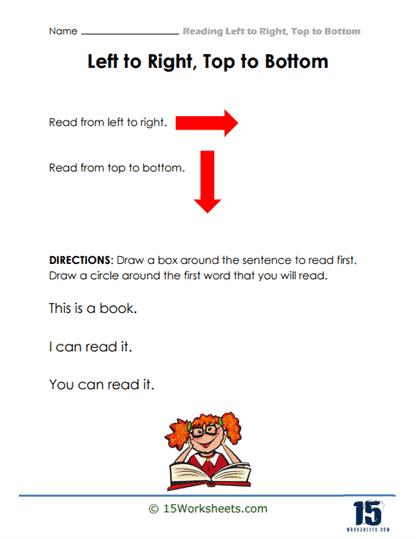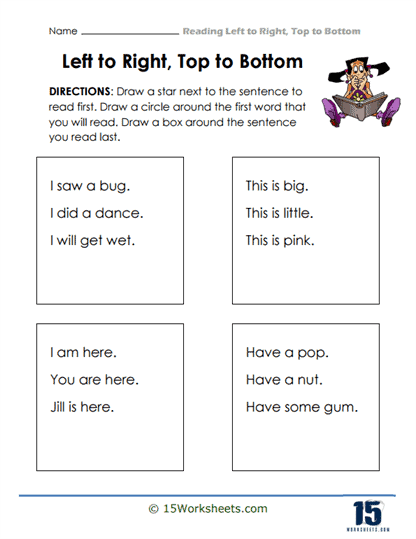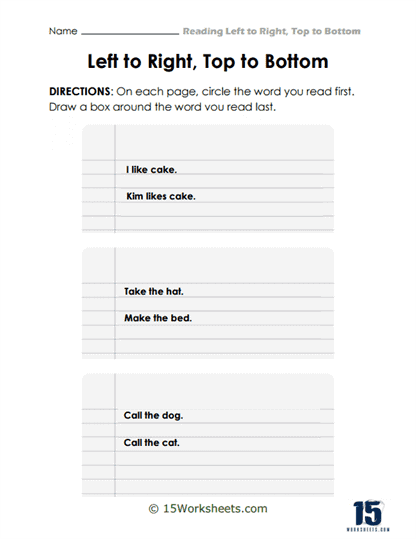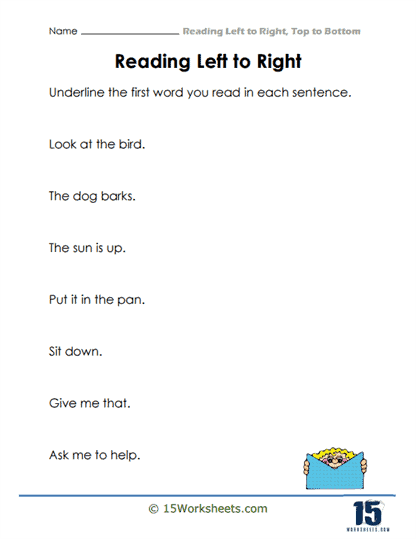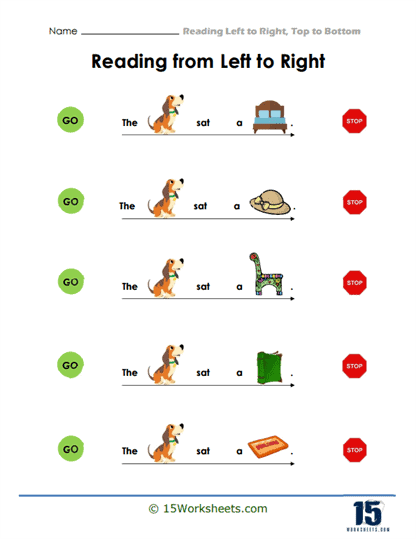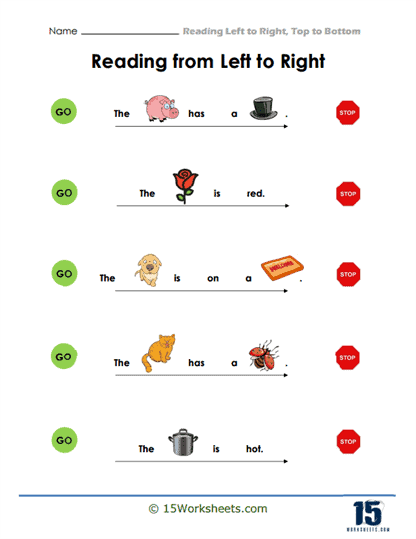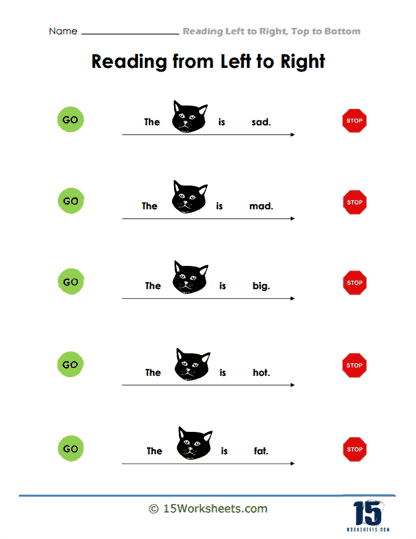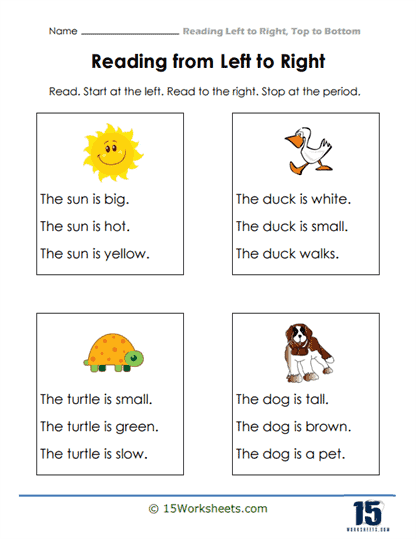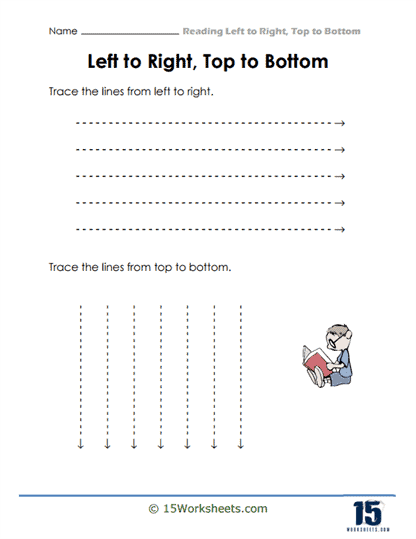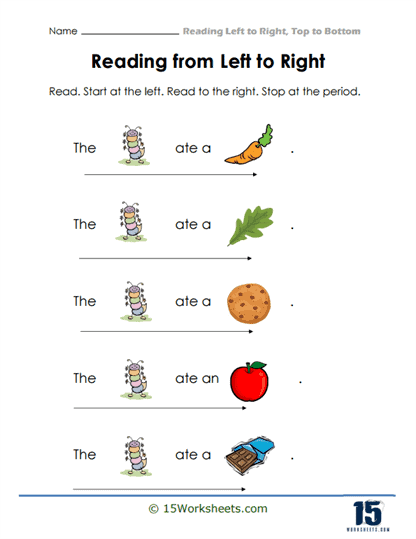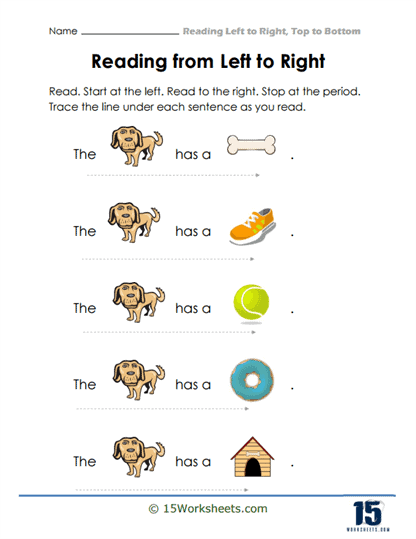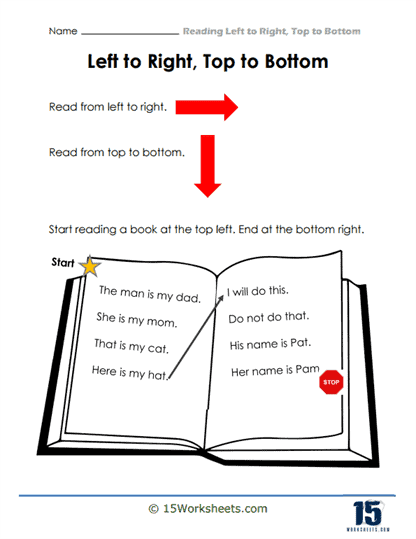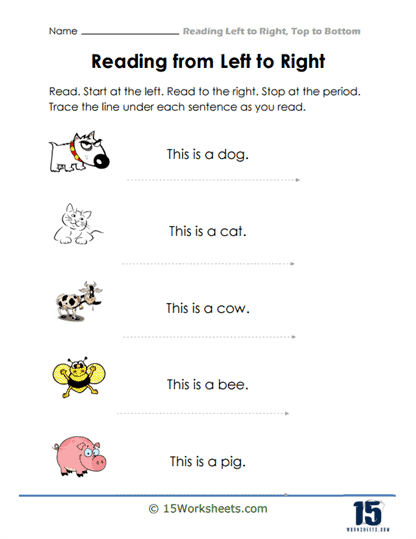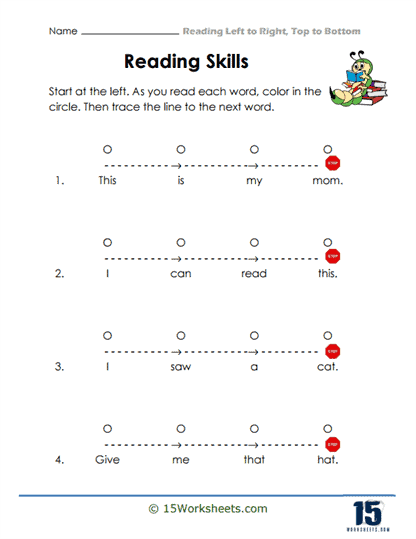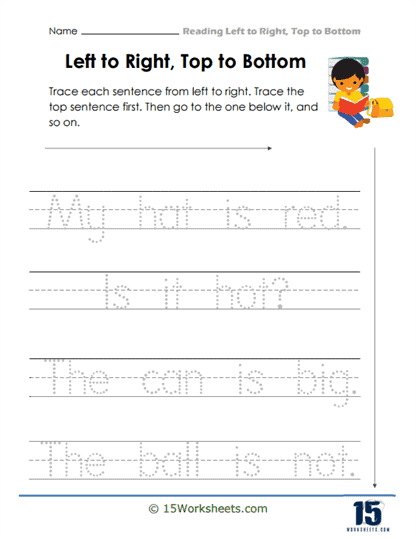Reading Left to Right Worksheets
All About These 15 Worksheets
Young learners embark on a reading adventure that promotes essential reading skills with this comprehensive collection of Kindergarten worksheets focused on reading from left to right. This series is designed to help them develop a fundamental understanding of reading directionality, strengthening their ability to read fluently and comprehend written texts.
Through a variety of interactive exercises, students will practice reading from left to right and top to bottom, honing their visual tracking, letter recognition, and comprehension skills. These worksheets also provide opportunities for students to build a strong foundation in reading, fostering a love for literacy and setting them on the path to becoming confident readers. Through these worksheets, students will:
- Engage in tracing exercises that require them to follow left to right lines and top to bottom lines, promoting fine motor skills and reinforcing the concept of reading directionality;
- Practice reading simple sentences written from left to right and top to bottom, gradually building their reading fluency and comprehension skills;
- And follow written directions that require them to perform specific actions in left to right order, fostering their ability to understand and follow instructions.
Through this engaging series of Reading Left to Right worksheets, young learners will develop a fundamental understanding of reading directionality, honing their visual tracking, letter recognition, and comprehension skills. By participating in a variety of activities that involve tracing, reading sentences, and following directions, students will strengthen their reading fluency, build their vocabulary, and enhance their comprehension abilities.
Overall, these worksheets provide opportunities for hands-on exploration, problem-solving, and cognitive development. By engaging with these exercises, students will develop a strong foundation in reading, foster a love for literacy, and cultivate essential skills for lifelong learning. Ultimately, this collection serves as a stepping stone for future reading success, laying the groundwork for confident and proficient readers.
Why Do We Read Left to Right and Top to Bottom?
The direction in which we read is largely a historical and cultural convention. The habit of reading from left to right and from top to bottom is mostly due to the writing systems that developed in the West.
The origins of this convention can be traced back to ancient civilizations. Early forms of writing didn’t have a standardized direction. For example, ancient Greeks used a writing style called “boustrophedon,” where the direction of writing would alternate every line: left to right, then right to left, and so on, like a farmer plowing a field.
The consistent left-to-right orientation was adopted later. One theory is that the convention was influenced by the physical act of writing itself. If you’re right-handed (as the majority of people are), writing from left to right minimizes the chances of smudging what you’ve just written with your hand. This is particularly relevant for writing systems that use ink and quill or other hand-held writing implements, as was common in European history.
Reading from top to bottom is also a convention that probably developed to mirror the natural order of writing lines one beneath another on a page, scroll, or tablet.
However, it’s important to note that not all languages follow this convention. For instance, Arabic and Hebrew are read from right to left, and traditional Chinese and Japanese texts can be written vertically and read from top to bottom, right to left.
Tips For Teaching Kids Reading
Model Reading Behavior – One of the simplest ways to get children used to right-to-left reading is by modeling this behavior. Read these languages in front of them, moving your finger along the text from right to left as you read.
Use Pictures and Visuals – For very young children, pictures can help a lot. Show them pictures and comics where actions are depicted from right to left. This can help them understand the concept visually.
Consistent Practice – Regular reading practice is crucial. Encourage children to practice reading from right to left every day. Starting with simple, short words can make this less daunting.
Educational Games – Make use of educational games and apps that help reinforce the concept of reading from right to left. There are many resources available online.
Use Physical Gestures – Use physical gestures to reinforce the direction. For example, when teaching, move your hand from right to left to show them the correct direction.
Use Marker Boards or Magnets – Write words on a marker board or use magnet letters on a refrigerator. Encourage children to form words in the right-to-left direction.
Reading Together – Read with your children. This will not only help them understand the concept of reading from right to left, but also develop a love for reading. Guide their finger along the words as you read them.
Use Books – Use books written in the language you’re teaching. Picture books are a great starting point as they make reading fun and engaging.

